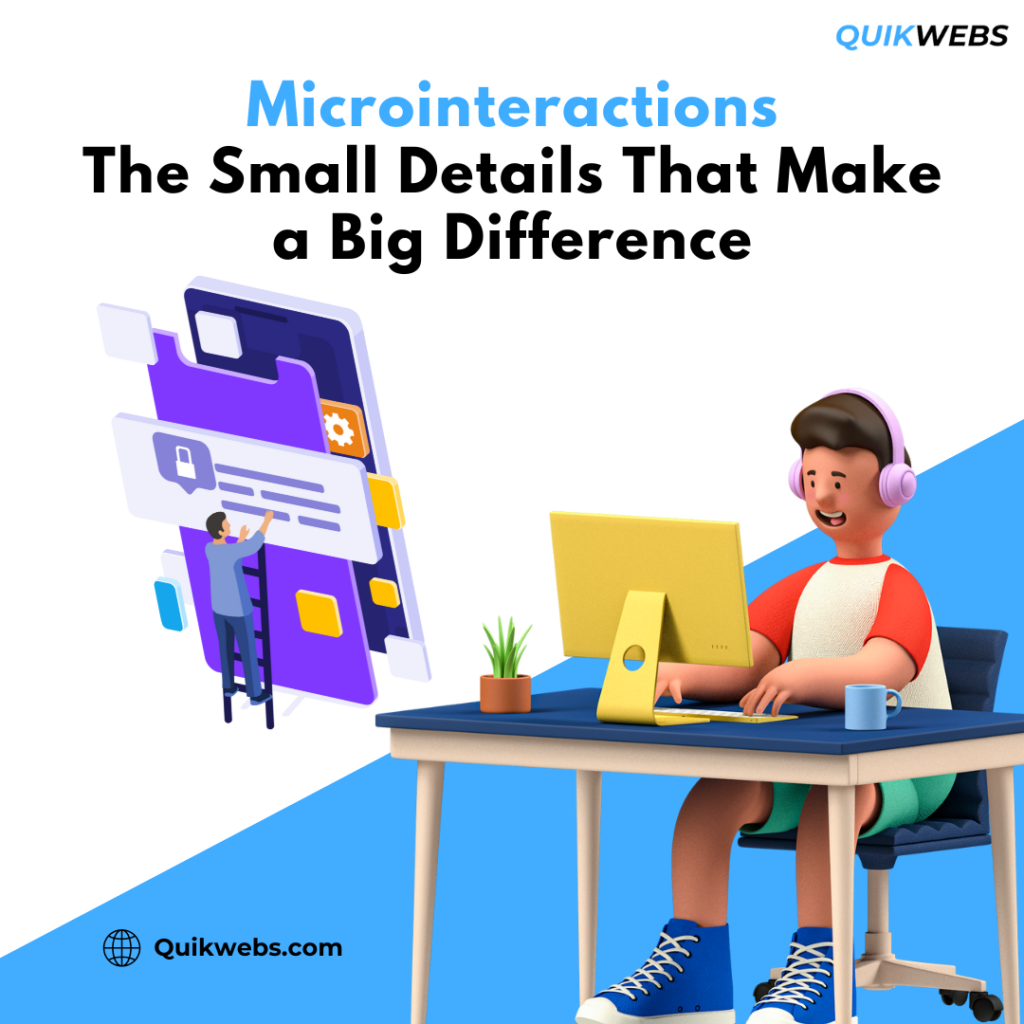
In the world of web design, it’s often the small details that have the most significant impact on user experience. Microinteractions, those subtle animations, transitions, and feedback mechanisms, play a crucial role in enhancing usability, delighting users, and creating memorable digital experiences. In this blog post, we’ll explore the concept of microinteractions, their importance in web design, and how they can elevate your website’s overall user experience.
Understanding Microinteractions:
Microinteractions are the tiny interactions that occur within a website or application, typically in response to user actions or system events. These interactions can take many forms, including button animations, hover effects, loading indicators, and error messages. While seemingly insignificant on their own, microinteractions collectively contribute to a more intuitive, engaging, and enjoyable user experience. They provide instant feedback, guide users through tasks, and add personality and character to digital interfaces.
Importance of Microinteractions in Web Design:
Microinteractions are essential components of user interface design, serving several critical functions. Firstly, they provide immediate feedback to users, confirming that their actions have been registered and guiding them through the interaction process. For example, a button changing color or shape when clicked communicates to the user that the action has been successfully executed. Additionally, microinteractions can enhance usability by adding clarity and context to user interactions, such as indicating loading progress or highlighting errors in form fields. Furthermore, microinteractions contribute to the overall user experience by adding moments of delight and surprise, creating a sense of satisfaction and engagement for users.
Examples of Microinteractions:
There are countless examples of microinteractions in web design, each serving a specific purpose and contributing to the overall user experience. Some common examples include:
- Button Animations: When a user hovers over a button, it may change color, size, or shape to indicate interactivity.
- Form Field Validation: As a user enters information into a form field, microinteractions can provide real-time feedback, such as displaying error messages or highlighting valid input.
- Loading Indicators: While waiting for content to load, a spinner or progress bar can reassure users that the system is working and prevent frustration.
- Toggle Switches: When toggling between different states or options, microinteractions can provide visual feedback to indicate the current selection.
- Notification Badges: When new notifications or messages are received, a badge or counter can appear to alert users without disrupting their workflow.
Implementing Microinteractions:
When implementing microinteractions in web design, it’s essential to strike a balance between functionality and aesthetics. Microinteractions should enhance usability and provide valuable feedback to users without being distracting or overwhelming. Additionally, designers should consider the overall brand identity and user experience when designing microinteractions, ensuring that they align with the website’s visual style and tone.
Microinteractions may be small in size, but they have a big impact on the overall user experience. By carefully crafting and implementing microinteractions in web design, designers can create more intuitive, engaging, and delightful digital experiences for users. Whether it’s a subtle button animation, a helpful loading indicator, or a clever form field validation, microinteractions play a vital role in making websites more usable, enjoyable, and memorable for users.
Ready to work with us?
Whether you’re a startup looking to make your mark or an established business in need of a digital revamp, we’re ready to collaborate and create something remarkable together.